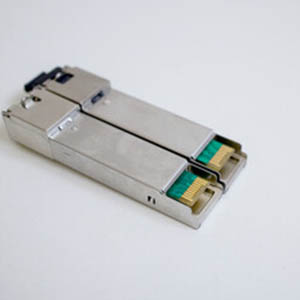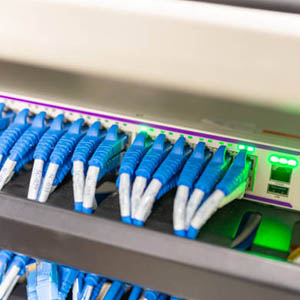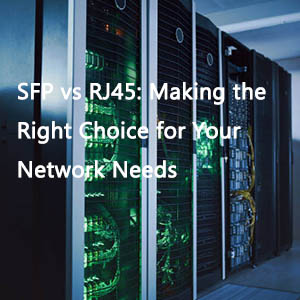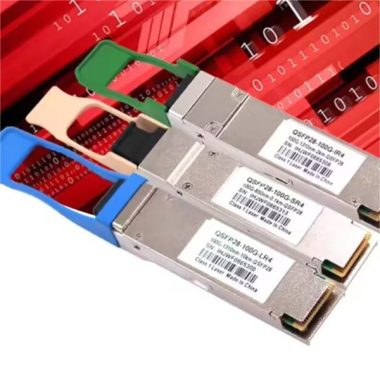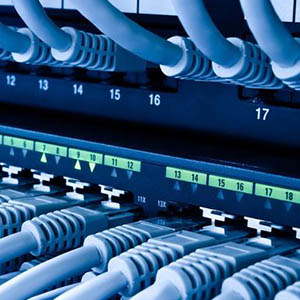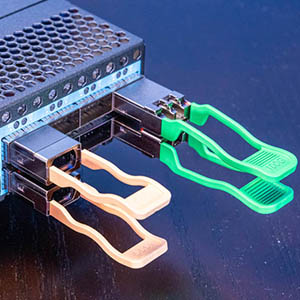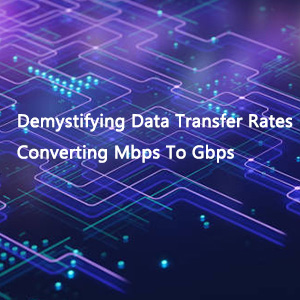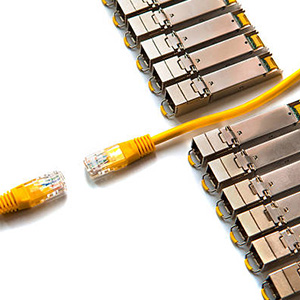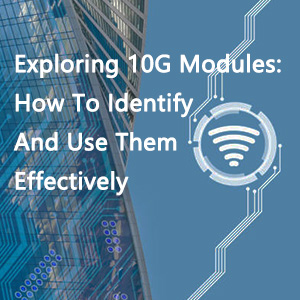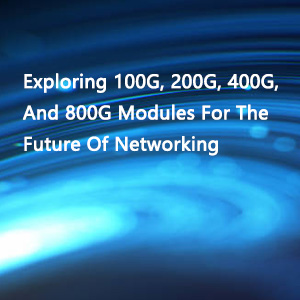In the world of networking and internet speeds, the terms Mbps (megabits per second) and Gbps (gigabits per second) are often used interchangeably. However, they represent different units of measurement. Understanding how they relate to each other is essential when configuring networks, purchasing networking equipment, or optimizing internet speed for your home or business.
This guide will break down the differences between 1 Gbps and 1000 Mbps, providing clarity on how these terms work in real-world applications. Additionally, we will explore the fiber transceiver solutions that Fiber-Life offers, which can help you achieve optimal performance in your networking setup.
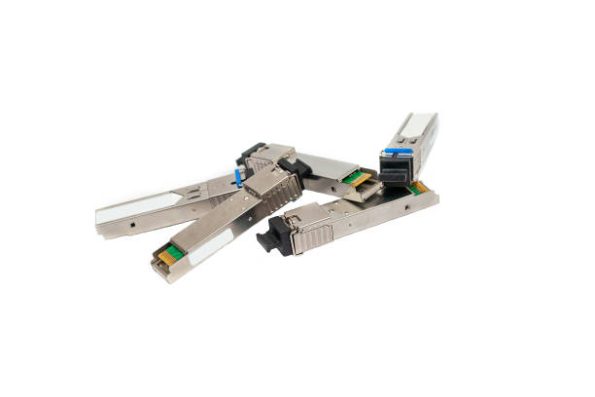
What is 1 Gig in Mbps?
1 Gigabit (Gb) is equal to 1000 Megabits (Mb). This means that 1 Gbps = 1000 Mbps.
This conversion is important to understand because data transfer rates are commonly measured in Mbps, but many internet plans, network devices, and even transceivers are rated in Gbps. So, whether you’re configuring fiber transceivers, upgrading a network, or measuring download speeds, knowing the conversion can help you make more informed decisions.
Mbps vs. Gbps: A Quick Overview
| Unit | Abbreviation | Equivalent in Mbps | Common Usage |
|---|---|---|---|
| 1 Gbps | Gigabit per second | 1000 Mbps | Common for high-speed internet plans |
| 1 Mbps | Megabit per second | 0.001 Gbps | Used for moderate speed connections |
| 1 Kbps | Kilobit per second | 0.000001 Gbps | Rarely used; very slow connection |
- 1 Gbps is equal to 1000 Mbps and is commonly used to measure high-speed internet connections, data center networking, and fiber-optic speeds.
- 1 Mbps is 1/1000th of a Gbps, which is used to measure moderate-speed internet connections, such as for home Wi-Fi or small business internet access.
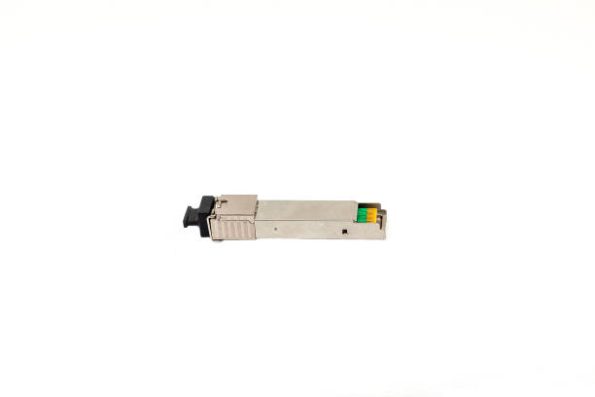
Understanding Mbps and Gbps in Real-World Contexts
1. Internet Speed and Streaming
When you’re choosing an internet plan or measuring network performance, you’ll see providers list their services in Gbps or Mbps. Here’s how it applies in real-world situations:
- 1000 Mbps (1 Gbps) is ideal for large offices, data centers, and high-bandwidth applications such as 4K video streaming, large file downloads, and online gaming.
- 100 Mbps or 300 Mbps is often sufficient for regular home or small office internet usage, where video conferencing, browsing, and moderate streaming are common.
2. Fiber Transceivers: Connecting Gigabit to Megabit
Fiber transceivers are used to convert electrical signals into optical signals and vice versa, allowing high-speed communication over fiber optic cables. These transceivers are rated for different speeds, such as 1 Gbps, 10 Gbps, and even 100 Gbps.
- 1 Gbps Transceivers: Often used in smaller networking environments where speeds above 100 Mbps are required.
- 10 Gbps and Beyond: Required in larger enterprise networks or data centers to handle high data throughput.
The Importance of Understanding Network Speeds for Your Setup
Choosing the right fiber transceiver or network equipment involves understanding the bandwidth requirements of your system. Here are some factors to consider when selecting transceivers and devices:
1. Network Type
- Home or Small Business Network: 1 Gbps transceivers are typically sufficient.
- Enterprise or Data Center Network: 10 Gbps or even 100 Gbps transceivers may be required for heavy traffic.
2. Application Requirements
- Streaming: For 4K video streaming, at least 50 Mbps is recommended per device, while Gigabit speeds (1000 Mbps or 1 Gbps) ensure smooth operation.
- Cloud Computing: High data centers or cloud computing services require high-speed transceivers to handle the massive data flow.
Fiber Transceivers Available at Fiber-Life
Fiber-Life offers a variety of fiber transceivers that cater to various networking needs. Whether you need a transceiver for Gigabit, 10G, or 100G networks, Fiber-Life has you covered. Here’s a breakdown of some key options available:
1. Gigabit Fiber Transceivers
- Speed: 1 Gbps
- Best For: Small offices, home setups, and moderate-speed data transfer.
- Applications: Ideal for connecting routers, switches, and network devices over fiber optic cables.
2. 10G Fiber Transceivers
- Speed: 10 Gbps
- Best For: Medium to large-scale enterprise networks.
- Applications: Used in high-speed data transfer, video conferencing, and cloud applications.
3. 100G Fiber Transceivers
- Speed: 100 Gbps
- Best For: Data centers and telecom networks.
- Applications: Suitable for large-scale server interconnections and enterprise-level data transfers.
Fiber-Life’s range of fiber optic transceivers is designed to meet various network demands, from low-speed connections to the highest possible bandwidth.
Choosing the Right Transceiver for Your Network
- Determine Your Speed Requirements
- If you’re building a small office or home network, 1 Gbps transceivers will suffice. For larger setups with high-demand applications, consider 10 Gbps or 100 Gbps.
- Consider Distance
- Fiber transceivers vary in distance capabilities. Single-mode fiber supports longer distances, while multimode fiber is suitable for shorter connections.
- Budget
- Consider your budget as higher-speed transceivers (like 10G or 100G) may come with a higher price tag, though they provide more bandwidth for future-proofing your network.
Summary
Understanding the difference between Mbps and Gbps is crucial when selecting the right fiber optic components. While 1 Gbps equals 1000 Mbps, understanding how this translates into network speed helps you make informed decisions when setting up your network. Whether you are building a home office or scaling up to a high-performance data center, Fiber-Life offers a wide range of fiber optic transceivers to meet your needs.
Explore Fiber-Life’s Fiber Transceivers Today!
At Fiber-Life, we provide high-quality fiber optic solutions, including 1 Gbps, 10 Gbps, and 100 Gbps transceivers. Our products are designed for seamless connectivity and high-performance networking, ensuring you get the most reliable and efficient solutions for your network.
Visit Fiber-Life.com today to explore our extensive product range and elevate your network performance with our top-tier transceivers!

